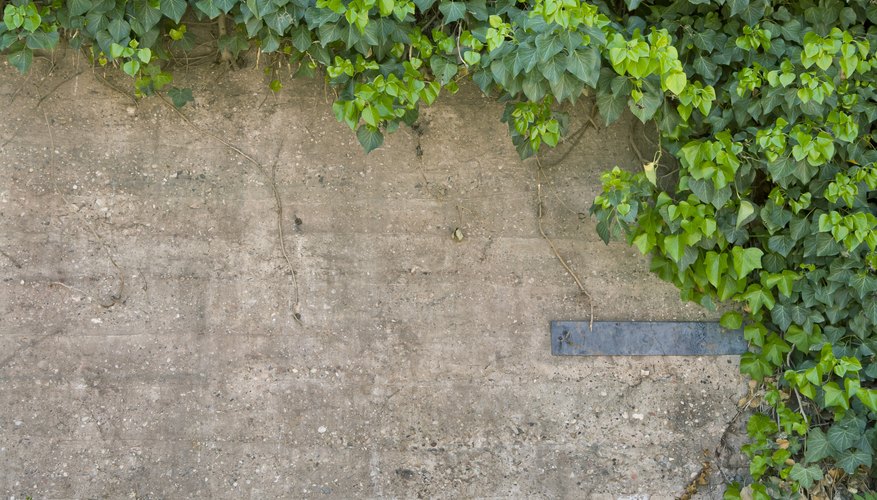Known by the botanical name Hedera helix, English ivy is an extremely fast-growing, evergreen perennial plant that can be cultivated as a climbing vine or trailing ground cover throughout the British Isles. English ivy is a shade-loving foliage plant that performs best in lowlight locations with well-drained soil. If your English ivy is turning brown, check to ensure that it is receiving the appropriate amounts of sunlight, irrigation and fertiliser.
Too much sunlight
English ivy performs best in part shade to full shade locations. Though English ivy will survive in full sun, its leaves may scorch and turn brown if exposed to too much direct sunlight. Plant or position your English ivy in a spot that receives between two and four hours of direct sunlight per day. For best results, look for a location that gets the majority of its sun in the morning and is shaded during the hottest parts of the day to ensure plenty of healthy, green foliage.
- English ivy performs best in part shade to full shade locations.
- Though English ivy will survive in full sun, its leaves may scorch and turn brown if exposed to too much direct sunlight.
Not enough water
English ivy insists on moist but well-drained soil for successful cultivation. If your ivy isn't receiving enough water, its leaves will turn yellow, and then brown, before dropping from the plant. Check the moisture of your English ivy's soil or growing medium every two to three days and water as often as needed to keep it consistently moist. However, avoid allowing the soil to become soggy or flooded; English ivy performs poorly in overly wet soils.
- English ivy insists on moist but well-drained soil for successful cultivation.
- Check the moisture of your English ivy's soil or growing medium every two to three days and water as often as needed to keep it consistently moist.
Improper fertilization
While English ivy can benefit from regular applications of fertiliser during its active growth phase, too much, or the wrong kind of, fertiliser can actually damage ivy by burning its roots. Unable to absorb the moisture and nutrients that you provide, ivy plants with burnt roots often turn brown and die. Fertilise English ivy monthly, from spring to autmn, with a balanced, water-soluble fertiliser or a fertiliser that has been specially formulated for broadleaved evergreens. Apply the fertiliser according to package instructions to avoid damaging your plant.
- While English ivy can benefit from regular applications of fertiliser during its active growth phase, too much, or the wrong kind of, fertiliser can actually damage ivy by burning its roots.
Bacterial leaf spot
Bacterial leaf spot is a botanical disease that affects English ivy and other foliage plants. The first symptoms of the disease are translucent, light-green spots with reddish edges that appear on the plant's leaves. As the disease progresses, the spots turn brown and cause the leaves to shrivel and fall from the plant. Control bacterial leaf spot in English ivy by pruning infected leaves from the plant with sharpened and sterilised pruning shears.
- Bacterial leaf spot is a botanical disease that affects English ivy and other foliage plants.
- As the disease progresses, the spots turn brown and cause the leaves to shrivel and fall from the plant.
